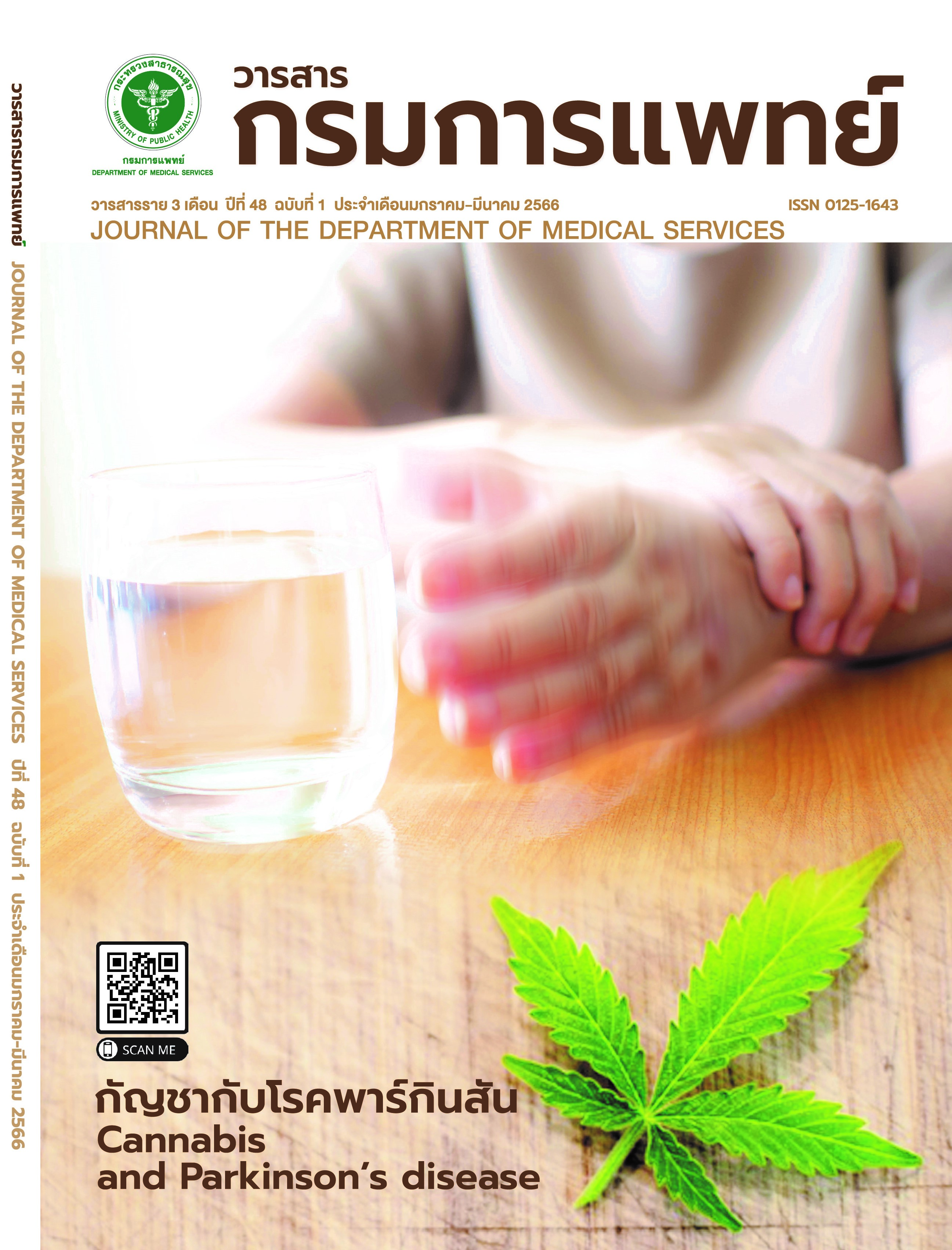Contact Allergy from Cosmetics Among Patients with Eczema on Face and Trunk: A 5-years Retrospective Descriptive Study
Keywords:
Allergic contact dermatitis (ACD), Irritant contact dermatitis (ICD), Cosmetic products, Adverse reactionAbstract
Background: Adverse reaction to cosmetic products is underestimated as some patients seek no treatments. Allergic contact dermatitis (ACD) and irritant contact dermatitis (ICD) to cosmetic products, in which diagnoses can be done by patch testing, are common. Objective: to identify the type of cosmetic products and common causative allergens. Method: A retrospective study of medical records of the patients during 2015–2019 at The Institute of Dermatology, Bangkok, Thailand was conducted. Result: The total number of 425 medical records were analyzed, 39 of which were male, and 386 were female, with a ratio of M:F of 1:9.89. All patients had lesions on the face and trunk. They were all investigated by patch testing with a standard and cosmetic set of allergens and their cosmetic products. Diagnoses of allergic contact dermatitis was found in 398 cases; irritant contact dermatitis in 26 cases and others in 14 cases. One patient may have more than one diagnosis. The most common types of cosmetic products which induce ACD include cleansers, whitening, other products (not classified or patients’ own products), moisturizers, and deodorants. The most common cause of allergen is Kathon CG in the standard set and gallate mix in the cosmetic set. Conclusion: Adverse reaction to cosmetic products is common. Patients’ history and investigation help in diagnosis, management, and prevention of recurrence.
References
Alani JI, Davis MD, Yiannias JA. Allergy to cosmetics: a literaturereview. Dermatitis 2013; 24:283-90.
Goossens A. Contact-allergic reactions to cosmetics. J Allergy(Cairo). 2011; 2011:467071.
Zirwas MJ, Stechschulte SA. Moisturizer allergy: diagnosis andmanagement. J Clin Aesthet Dermatol 2008; 1:38-44.
Boonchai W, Desomchoke R, Iamtharachai P. Trend of contactallergy to cosmetic ingredients in Thais over a period of 10 years.Contact Dermatitis 2011; 65:311-6.
Bunyavaree M, Kasemsarn P, Boonchai W. Cosmetic preservativelabelling on the Thai market. Contact Dermatitis 2016; 74:217-21.
Fasth IM, Ulrich NH, Johansen JD. Ten-year trends in contactallergy to formaldehyde and formaldehyde-releasers. ContactDermatitis 2018; 79:263-69.
Simonsen AB, Foss-Skiftesvik MH, Thyssen JP, Deleuran M,Mortz CG, Zachariae C, et al. Contact allergy in Danish children:Current trends. Contact Dermatitis 2018; 79:295-302.
Panico A, Serio F, Bagordo F, Grassi T, Idolo A, DE Giorgi M, et al.Skin safety and health prevention: an overview of chemicalsin cosmetic products. J Prev Med Hyg 2019; 60:E50-7.
Hafner MFS, Rodrigues AC, Lazzarini R. Allergic contact dermatitisto cosmetics: retrospective analysis of a population subjectedto patch tests between 2004 and 2017. An Bras Dermatol 2020;95:696-701.
Cheong SH, Choi YW, Myung KB, Choi HY. Comparison ofMarketed Cosmetic Products Constituents with the AntigensIncluded in Cosmetic-related Patch Test. Ann Dermatol 2010;22:262-8.
Nguyen HL, Yiannias JA. Contact Dermatitis to Medications andSkin Products. Clin Rev Allergy Immunol 2019; 56:41-59.
Downloads
Published
How to Cite
Issue
Section
License
Copyright (c) 2023 Department of Medical Services, Ministry of Public Health

This work is licensed under a Creative Commons Attribution-NonCommercial-NoDerivatives 4.0 International License.
บทความที่ได้รับการตีพิมพ์เป็นลิขสิทธิ์ของกรมการแพทย์ กระทรวงสาธารณสุข
ข้อความและข้อคิดเห็นต่างๆ เป็นของผู้เขียนบทความ ไม่ใช่ความเห็นของกองบรรณาธิการหรือของวารสารกรมการแพทย์


